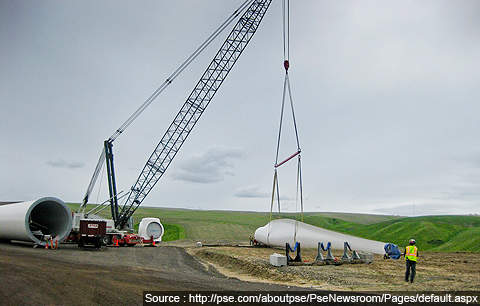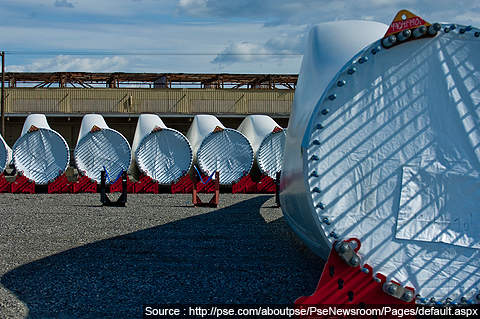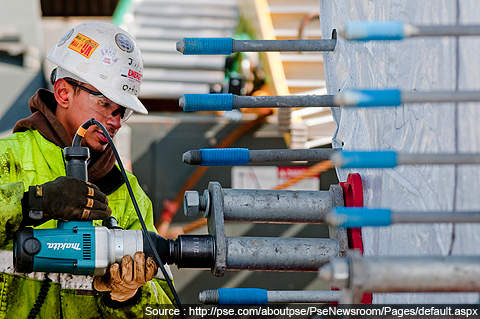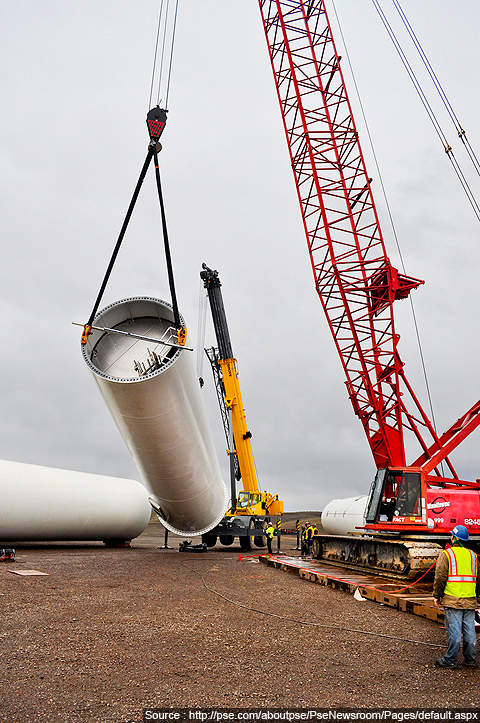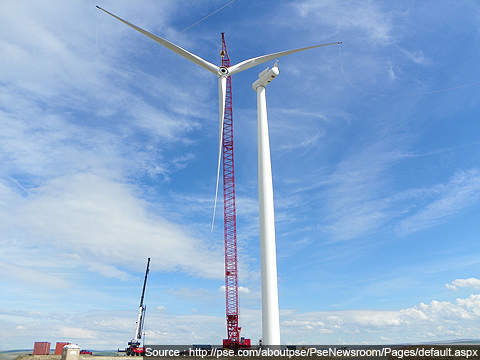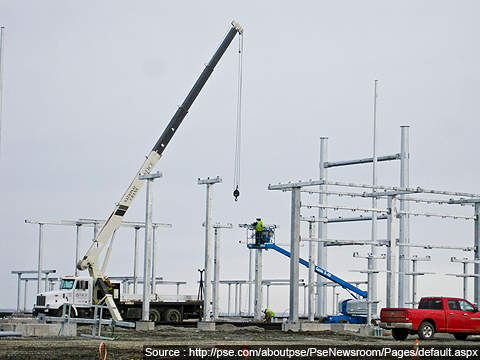Lower Snake River Wind Project is a 1,432MW wind farm located in the state of Washington, in the US’s north-west. The project is being developed in phases. Phase I with a capacity of 343MW was constructed in the Garfield County. The electricity generated by this phase is sufficient to power 100,000 homes.
Washington state utility, Puget Sound Energy (PSE), is undertaking the project. PSE and RES Americas formed a joint venture to develop the project in December 2008. PSE, however, acquired complete ownership of the project in August 2009.
Construction of the first phase started in May 2010 and was completed in February 2012. Phase I is PSE’s biggest wind project in the US. It has generated 150 temporary and 25 permanent jobs. Development of the remaining phases is currently underway.
The project will help to meet the long-term renewable energy needs and also safeguard PSE from price fluctuations in the energy market. It will also offset the taxes on carbon emissions that the federal government plans to impose on utilities, in a move to protect the environment.
Project finances behind PSE’s wind farm
PSE is trying to secure federal funding and state incentives for the project. In order to achieve this, PSE is employing apprentice labour for the construction activities. This is also expected to improve the economics of the project.
Construction of turbines and cables and wind resource area (WRA) details
Since the start of construction, access roads were built and underground power cables installed. The cables transport electricity generated to on-site substations.
The first wind turbine was installed in April 2011. Giant cranes featuring 390ft long booms were used to install various sections of the turbines. The wind farm is being developed on 124,000 acres of leased farmland. More than 98% of this farmland will be available for harvesting wheat crops after the project becomes fully operational. Farmers who own the land will be given lease and royalty payments.
The project area has been segmented into four wind resource areas (WRAs). The 39,900 acre Kuhl Ridge WRA and 10,000 acre Dutch Flats WRA are located in the Garfield County of Washington state. The 32,700 acre Oliphant WRA spans both Garfield and Columbia counties. The 41,500 acre Tucannon WRA is located in Columbia County.
A total of 149 wind turbines rated at 2.3MW were installed at the 40,000 acre site under phase I. Future phases of the project will include up to 795 turbines. The turbines are 430ft high and feature towers, nacelles and rotors. The total weight of each turbine is more than 340t.
The turbine towers weigh more than 600t and are fastened to 8.5ft thick concrete foundations. The three-blade rotors of the turbines have a diameter of 331ft. The nacelles hold the turbines’ gearboxes and power generator. A 15,000ft² operations and maintenance building was constructed near Pomeroy.
Grid network and substations linked to Washington’s renewable energy project
Bonneville Power Administration built a new 500/230kV substation called Central Ferry Substation. The substation transfers the power generated by the wind farm to the Federal Columbia River Transmission System, through BPA’s Little Goose-Lower Granite 500kV transmission lines.
Contractors linked to Puget Sound Energy’s Lower Snake River Wind Project
RES was responsible for construction of the project infrastructure under phase I. Opp & Seibold built the operations and maintenance building.
Siemens supplied the turbines, the first 22 of which were delivered in May 2011. The contract also includes an option to supply another 110 turbines in 2012 for future phases of the project. A five-year service agreement was also provided in the contractual scope.
Burns & McDonnell was contracted to provide project development, design and other services. SWCA carried out plant surveys for the project and also assisted in the preparation of the environmental impact statement.

